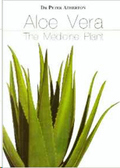
Botanic description
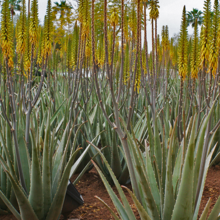
The cactus-like succulent aloe vera belongs to the genus of the liliaceous plants. The plant is either stem-less or very short-stemmed (stem up to 25 cm long) with an average about 20 leaves in a straight, dense rosette. The leaves grow to up to 40 – 50 cm long and 6 – 7 cm wide. The leaves are rather thick, fleshy, water retaining; concave on the top side, grey-green often reddish and young plants are often speckled. The underside of the leaf is convex with a pale pink rim that is dressed with 2 mm long thorny teeth spaced at every 10 – 20 mm. One leaf can weigh as much as 1.5 to 2 kg. The succulent leaf of the aloe is an adaptation to the very dry conditions of its habitat. The roots of the aloe are relatively short and lay flat embedded in the earth.
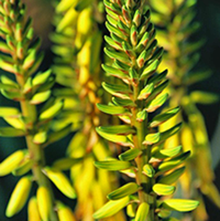
The inflorescence is simple or a simple or double raceme and grows up to 60 – 90 cm. The raceme is dense, cylindrical and narrowing towards the top. The racemes grow up to 40 cm long. The pherophylls are white, the blossoms about 3 cm long and bright yellow to red. The fruit of the plant are loculicilade capsules. The aloe grows numerous adventitious buds which the plant later uses for reproduction in a vegetative way. All approximately 200 different species of aloe are protected by the Washington Convention as of March 3, 1973, in their natural habitats. Exempt are, in addition to seeds and cell cultures and the like, “single leaves as well as parts and products thereof which derive from plants outside of their natural distribution area or from artificially reproduced aloe plants of the species “vera””.
Area of distribution
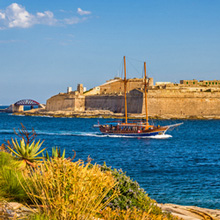
The true origin of the aloe plant is unknown but it is believed that its true roots could lie either in the region around Cape Town in South Africa or in Sudan and the Arabic peninsula. Today, this species can be found both cultivated and growing in the wild in North Africa from Morocco to Egypt, in the Middle East, in Asia – abundantly in India, in all of the Southern Mediterranean, on Madeira, the Cape Verde islands and the Canary Islands. It was introduced to Middle and South America, especially the Antilles, Puerto Rico, Jamaica, Mexico and the pre-Andes region and it can be found growing wild in these areas.
Cultivation and natural habitat
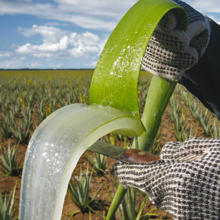
The aloe grows wild in tropical and subtropical territories. The plant thrives in arid sandy conditions, dry earth which contains clay and lime and can easily be cultivated.
The main areas of cultivation are the Dutch Antilles, the coastal areas of Venezuela and the subtropical regions of the US and Mexico where it is nurtured on massive plantations. The leading supplier of aloe vera gel is the USA. In 2001 their cultivation area for aloe vera in Mexico alone was 525 hectare; this represents a world market value of about 30 million dollars.
The aloe vera needs a minimum of 320 sunny days per year, feeds 98% on air and does not flourish with the application of fertilisers. The plants can be harvested at the earliest after 3 – 4 years of growth.
